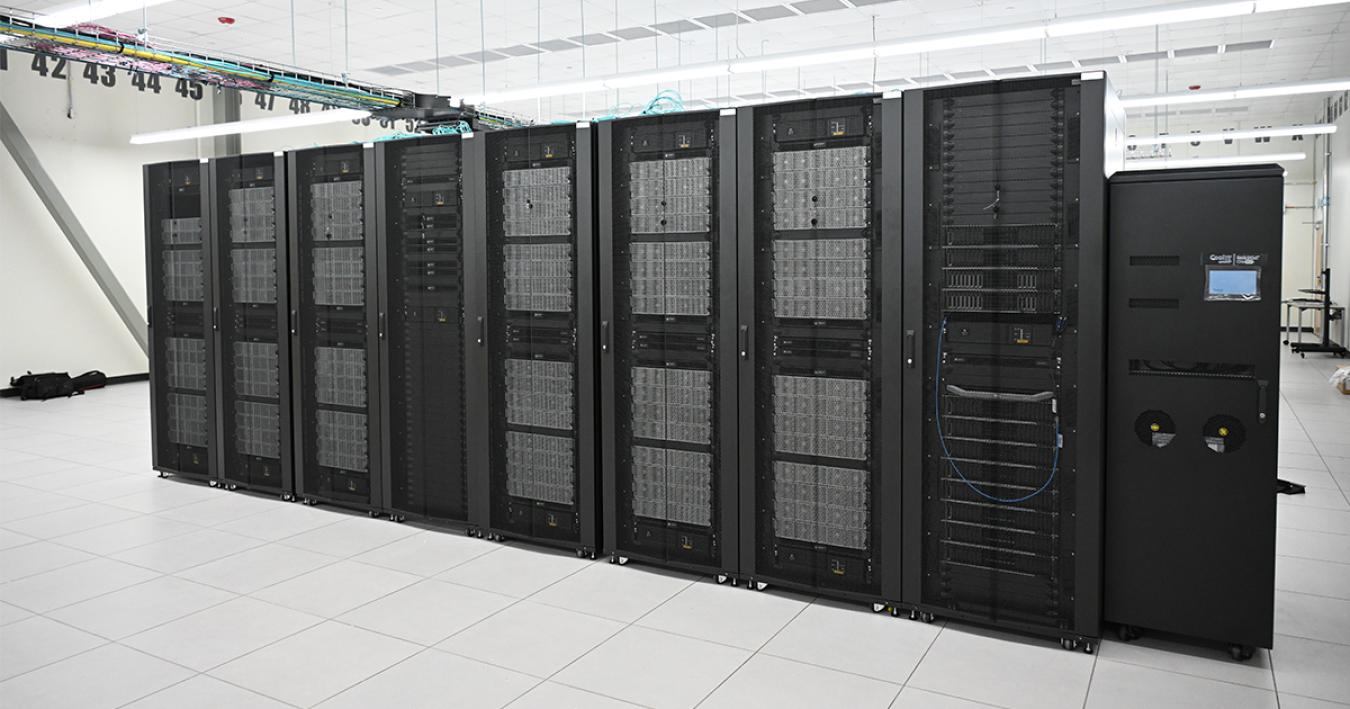The new supercomputer will help Idaho National Laboratory keep up with growing demand for computational resources used in nuclear technology research.
July 15, 2024

Idaho National Laboratory (INL) recently unveiled its latest supercomputer that brings faster processing speeds and additional computing power to Idaho Falls.
Bitterroot will help the lab keep pace with the growing demand for computational resources and can be accessed through the U.S. Department of Energy’s Nuclear Science User Facilities (NSUF) to support the nation’s nuclear energy-related research projects at no cost to the user.
Faster Processing and More Memory
Bitterroot joins three other supercomputers at the lab's Collaborative Computing Center.
Bitterroot is a Dell-based, CTS-2 system and offers more than 43,000 processing cores with 3 petaflops of performance. It is also the first system supported by NSUF to offer high-bandwidth memory, which speeds up computations in applications that were previously slowed down by bandwidth limitations.
The new memory feature allows researchers to better simulate next-generation nuclear technologies, such as advanced fuels and reactors designs.
More than 1,300 researchers currently access high-performance computing resources at the lab and Bitterroot’s added capacity will be essential in picking up more of the daily workload.
NSUF’s flagship Sawtooth supercomputer is unable to keep with the high demand for high priority, complex operations on its own.
“[The Center’s] high performance computing is unique in that 80-90 percent of our computer cycles are dedicated to nuclear energy research,” said Matthew Anderson, manager of the High-Performance Computing group at Idaho National Laboratory. “Bitterroot brings us a new capability and additional capacity as we prepare for additional long-term investments in new computing resources.”
What is a Supercomputer?
Supercomputers are used to perform complex calculations and simulations at extremely high speeds.
They can augment physical experiments and perform simulations to predict how materials will perform. These simulations can then be selected to test the most promising experiments—ultimately saving time, money, and resources on technology development.
What’s Next?
Bitterroot will help bridge the gap in modeling and simulation needs while the NSUF works to bring its next flagship supercomputer online in 2025.
Teton is anticipated to be three times as powerful as Sawtooth.
Bitterroot and Sawtooth will continue operating after Teton comes online to help meet the high user demand from industry, national laboratories, and academia.
The NSUF is the Office of Nuclear Energy's only designated nuclear energy user facility. NSUF offers a wide variety of resources ranging from access to the world’s largest test reactor to high-performance computing at Idaho National Laboratory and a diverse mix of university, national laboratory and industry partner institutions.
Learn more about NSUF High Performance Computing resources.

